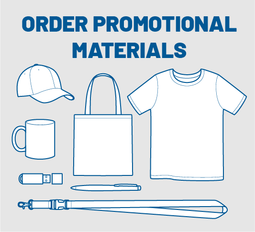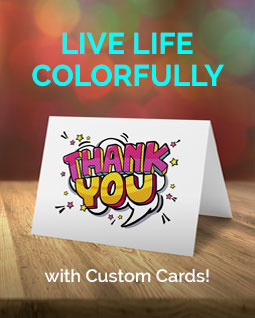More Print Tips
- • Maximum Impact: Is it Best to Send a Postcard or a Letter?
- • Drive Rapid Response to Your Direct Mail: 10 Pro Tips
- • The Usefulness and Utility of Print Marketing
- • Boost Sales with Brochures
- • 5 Opacity Tips You Should Know
- • The Window to Marketing
- • Profitable Postcard Marketing: Finding the Right Frequency
- • 3 Fundamentals for Nailing Your Direct Mail Marketing
- • Picking the Perfect Paper
The Perfect Cover-Up
There are endless options available to you to make your next print piece really stand out!
If you're looking for a simple technique that beautifully enhances your print item's impact and appeal without breaking your budget, consider adding a varnish to your next print project.

Adding a print varnish involves adding an entirely transparent coating to a printed page. Just like choosing paint types when you're painting your living room, there are three basic varnish finishes to choose from: satin, gloss, and dull (matte). Varnish can add a unique, creative element and give your design a boost, so make sure you choose the one that best fits with the look and feel you're trying to accomplish with your project.
Know Your Options
Dull: Also known as matte, this is very different from a varnish-like gloss. A matte finish it best suited if your design contains a lot of text, as it will deflect light and glare. Using a dull varnish can be a great tool for improving readability on pages containing text. Although called dull, this varnish is not at all boring. It produces exciting and attractive print results.
Gloss: As its name indicates, this varnish is the show-off of the bunch and gives a glossy type of appearance. Gloss varnish makes colors look more saturated, and your design elements look more crisp and sharper. It is perfect for printed pages containing items like photographs and graphics.
Satin: The best of both worlds, satin varnish falls somewhere in between glossy and matte and offers the perfect level of shine. This option is ideal if you have a lot of photo and text combination pieces.

What's in it for Me?
From an aesthetic standpoint, varnish can enhance the overall appearance of your piece, but it also decreases the amount of time it takes the printed piece to dry and reduces the chance that the ink will smear. Varnish also adds durability and strength to a piece by doing its job to prevent excess wear, smudging and scuffing, and providing UV protection. All of these benefits combine to give you a printed piece that lasts longer and stays in better, more attractive condition.
Once you try varnish on one of your projects, you will likely wonder how you ever did without it and will be glad to have this technique in your printing toolbox.


Basics Design: Print and Finish 2nd Edition
by Gavin Ambrose and Paul Harris
The Basics Design series is designed to provide graphic arts students with a theoretical and practical exploration of fundamental topics, including layout, format, typography, colour and image. Packed with examples from students and professionals and fully illustrated with clear diagrams and inspiring imagery, they offer an essential exploration of the subject.
The second edition of the sixth book in the series, Print and Finish is a guide to the printing and finishing techniques employed by graphic design studios all over the world. A thorough understanding of these techniques will equip the designer with the ability to harness the creative potential of these processes and add creative elements to a design in order to increase its impact and functionality.
Showcasing seven different paper and ink stocks and finishes, the book is an invaluable reference tool. With new contributions and activities, the second edition builds on the success of the first, and is an absolute must-have for all design students.



Share this